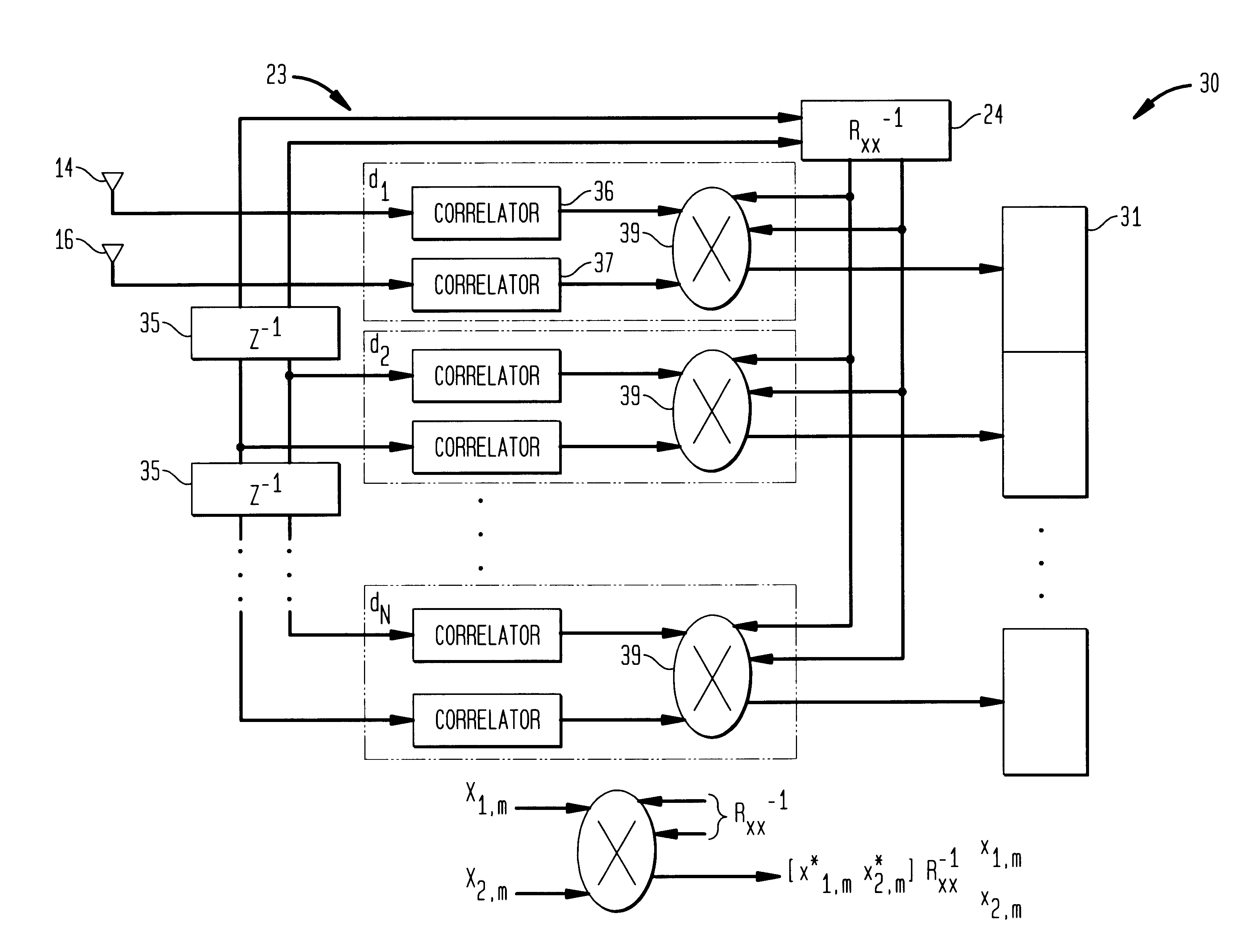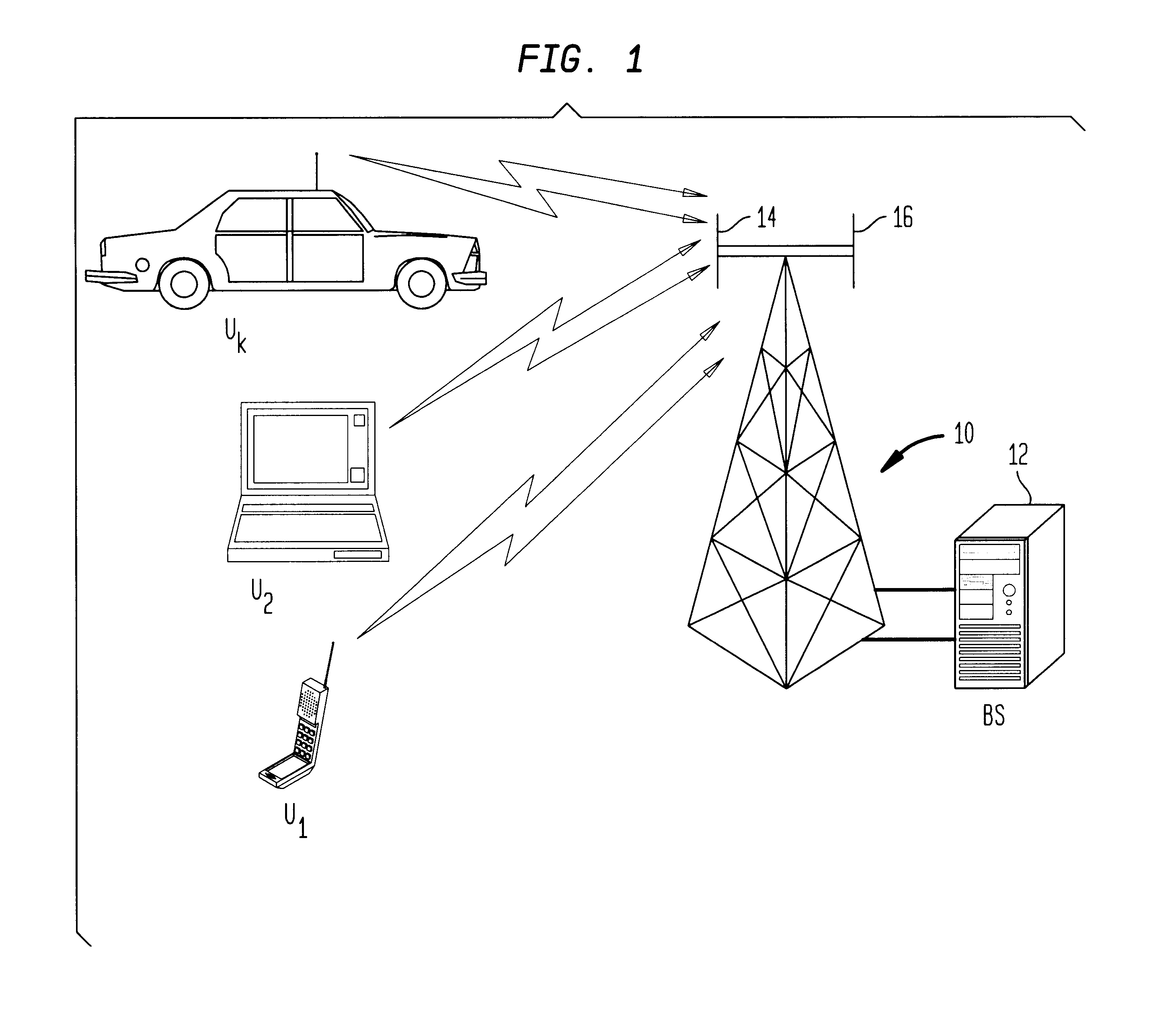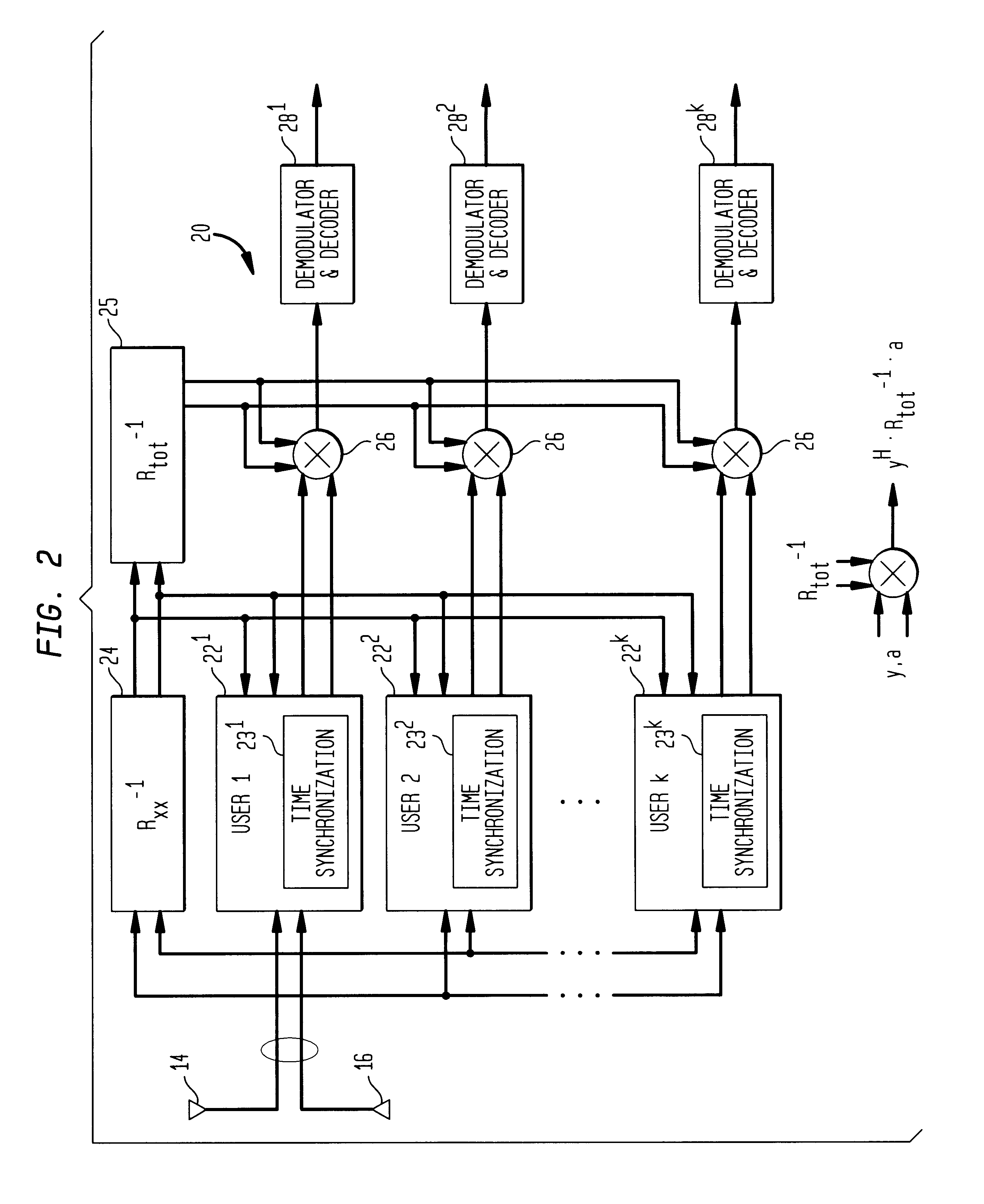Code division multiple access system and method of operation with improved signal acquisition and processing
- Summary
- Abstract
- Description
- Claims
- Application Information
AI Technical Summary
Benefits of technology
Problems solved by technology
Method used
Image
Examples
Embodiment Construction
Briefly, the present invention seeks to create a receiver and method of operation in a CDMA system in which the receiver includes a universal cross-correlation matrix (i.e., a cross-correlation matrix which can be used for all user signals) from pre-correlated signals that is used to improve synchronization as well as improving system capacity through interference reduction. Additionally, since a single or universal matrix array can be used for all user signals arriving at the base station, the complexity of the method is reasonable.
The universal array processing method involves correlating the received samples on each antenna to create a common or universal correlation matrix. The universal matrix is inverted and applied to the received samples with the result being used to estimate proper signal timing (i.e., synchronization) for each of the desired signals. The processing provides more robust synchronization than conventional synchronization methods since it reduces the interfere...
PUM
 Login to View More
Login to View More Abstract
Description
Claims
Application Information
 Login to View More
Login to View More - R&D
- Intellectual Property
- Life Sciences
- Materials
- Tech Scout
- Unparalleled Data Quality
- Higher Quality Content
- 60% Fewer Hallucinations
Browse by: Latest US Patents, China's latest patents, Technical Efficacy Thesaurus, Application Domain, Technology Topic, Popular Technical Reports.
© 2025 PatSnap. All rights reserved.Legal|Privacy policy|Modern Slavery Act Transparency Statement|Sitemap|About US| Contact US: help@patsnap.com



